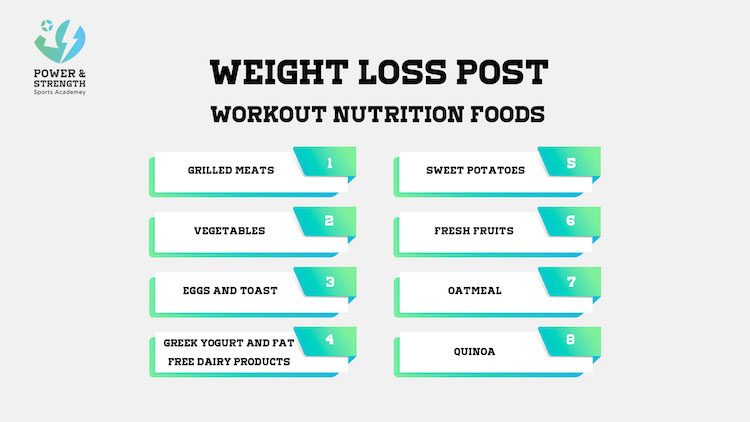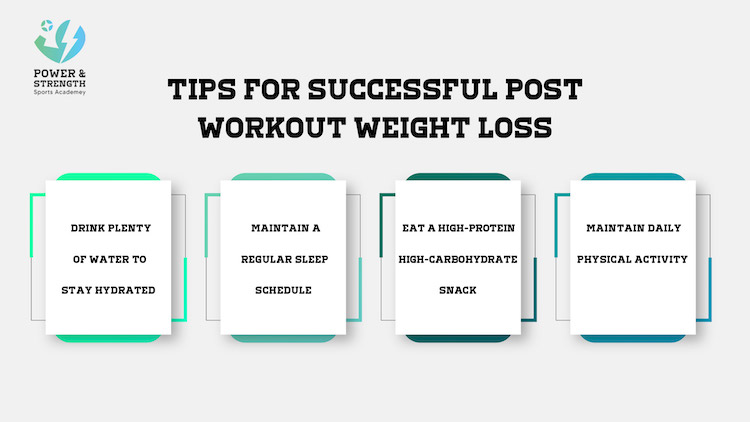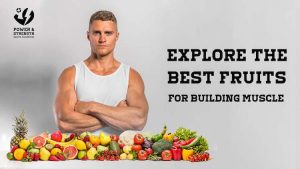
The Best Cutting Diet for Fat Loss and Muscle Building
Many people wish to achieve both at the same time: weight loss and muscle preservation. Then, is it possible to complete this in a short

Your Meal is the Key to Successful Weight Loss!
Yes, you read well. One of the most important components in attaining your objective of a healthy body and powerful build is your daily post-workout nutrition.
While exercise is important, it is insufficient without the proper nutrition adapted to your requirements and goals.
But, what is the best post workout meal to lose weight? Read this article to know more.
Some people think that not eating after exercise helps with weight loss, but the body might suffer as a result, hampering muscle building and recuperation.
After exercise, the body requires proteins and important nutrients to restore the energy it has wasted.
However, the key to weight gain or loss is the quality of the food you consume!
Then, the perfect post workout meal to lose weight should have particular protein and carbohydrate ratios, with the goal of replenishing the body’s energy resources.
A post-workout meal rich in sugar and bad fats may result in weight gain rather than loss.

It’s a plan that switches your body’s primary energy source from carbohydrates to the fats you’ve got stored there. When your body can’t get enough energy from the carbohydrates you eat, it starts turning body fat into energy.
This strategy is separated into two parts:
This phase lasts about 6 months, but it can be extended based on the advice of your nutritionist.
During this phase, your trainer seeks to put the cutting diet for fat loss into action by:
It is important to avoid adding any fats to your meals, such as butter or oil. You should also drink at least half a gallon of water per day.
While following the cutting diet for fat loss, your meals will primarily consist of ingredients such as:
Furthermore, your trainer will make certain that you include supplements rich in the following elements:
Also known as the refeeding Phase, because your trainer gradually reintroduces carbohydrates into your diet over a 6 to 8 week period.
During the first four weeks of the cutting diet for fat loss, you can consume up to 45 grams of carbs, followed by a gradual increase to 90 grams during the next four weeks.
In addition, you will limit your protein consumption in accordance with the advice of your trainer or nutritionist. This is accomplished by performing monthly checkups to verify that you remain healthy while adhering to this diet.
During this phase, your body gets its energy from ketones, which are derived from fats, rather than glucose, which is derived from carbohydrates.
According to a nutritionist’s advice, some foods are often avoided in the pursuit of a cutting diet for fat loss, such as:
Let us tell you that there is no such thing as a one-size-fits-all optimal diet!
Yes, you read that correctly. The best diet for you is determined by a variety of elements, such as your body’s nature, health state, goals, and so on. As a result, a cutting diet for fat loss that works well for someone else may not work well for you.
So, work carefully with your nutritionist to assess your circumstances and build a nutrition plan that works for you.
However, experts recommend the following foods for a cutting diet for fat loss:
Examples of snacking options are coffee, fruits, and salads. However, the quantity and components change depending on the person’s properties, age, and specific test results, and it is your specialist’s task to accurately determine your needs.
Every dietary plan has benefits that work in your favor as well as drawbacks that should be considered before execution. For this particular plan:
There are some advantages to this type of diet, like:
Following a cutting diet for fat loss can improve blood sugar levels in diabetics by limiting carbohydrate intake, which later converts to glucose.
Excessive eating can cause a rapid increase in blood pressure. The lowered desire for the cutting diet for fat loss aids with insulin resistance, ultimately lowering blood pressure.
The primary source of energy is taken from the burning of stored body fat, resulting in quick weight loss while maintaining muscle strength, which can be improved further by exercise routines.
The drawbacks of following the PSMF diet plan can be summarized as follows:
Sustaining an extended period of time on a cutting diet for fat loss can be difficult due to the vital nature of carbohydrates, fats, and proteins, all of which must be eaten by the body. Long-term depletion of these nutrients might be difficult to manage.
Depending on individual circumstances, relying only on protein-based eating can occasionally result in moderate dehydration. To combat this, enough water and fluid consumption are usually advised during the cutting diet for fat loss to avoid dehydration.
Some women who follow a PSMF plan may experience mood swings and hormone abnormalities that alter their menstrual cycle. This can happen if their food does not meet their particular demands or if they do not take vitamin supplements.
For these reasons, it is usually recommended that you follow a cutting diet for fat loss under the supervision of a trained nutritionist. This guarantees that your health is maintained and that your goals are met in the best way possible.

At Power and Strength, we provide a number of dietary programs to help you reach your goals in record time, such as:
On top of that, you have the opportunity to invest in personalized one-on-one sessions with your specialized trainer. This seeks to build a holistic and personalized nutrition plan that aligns perfectly with your unique needs and goals.
Finally, the PSMF nutritional program is one of the most successful strategies for shedding fat while maintaining muscle in a short period of time.
Hence, you can begin a cutting diet for fat loss and a series of specialized workout programs to increase muscle mass. However, it is recommended that you consult with a doctor or a nutritionist before embarking on this path.
Contact us right away to begin a diet plan that is tailored to your specific needs and goals.
What To Know About the Protein-Sparing Modified Fast Diet
What to Know About the Protein-Sparing Modified Fast Diet
Meta description
Discover the Best Cutting Diet for Fat Loss and Muscle-Building in a Short Time | 1. What is the Cutting Diet? 2. How Does the Cutting Diet Work? 3. Foods to Avoid During the Cutting Diet 4. The Best Diet Plan for Cutting and Muscle Building 5. Pros and Cons of Following the Cutting Diet

Many people wish to achieve both at the same time: weight loss and muscle preservation. Then, is it possible to complete this in a short

What is the benefit of continuing a strong training program without considering proper nutrition principles? Many trainees put in great effort during their workouts but